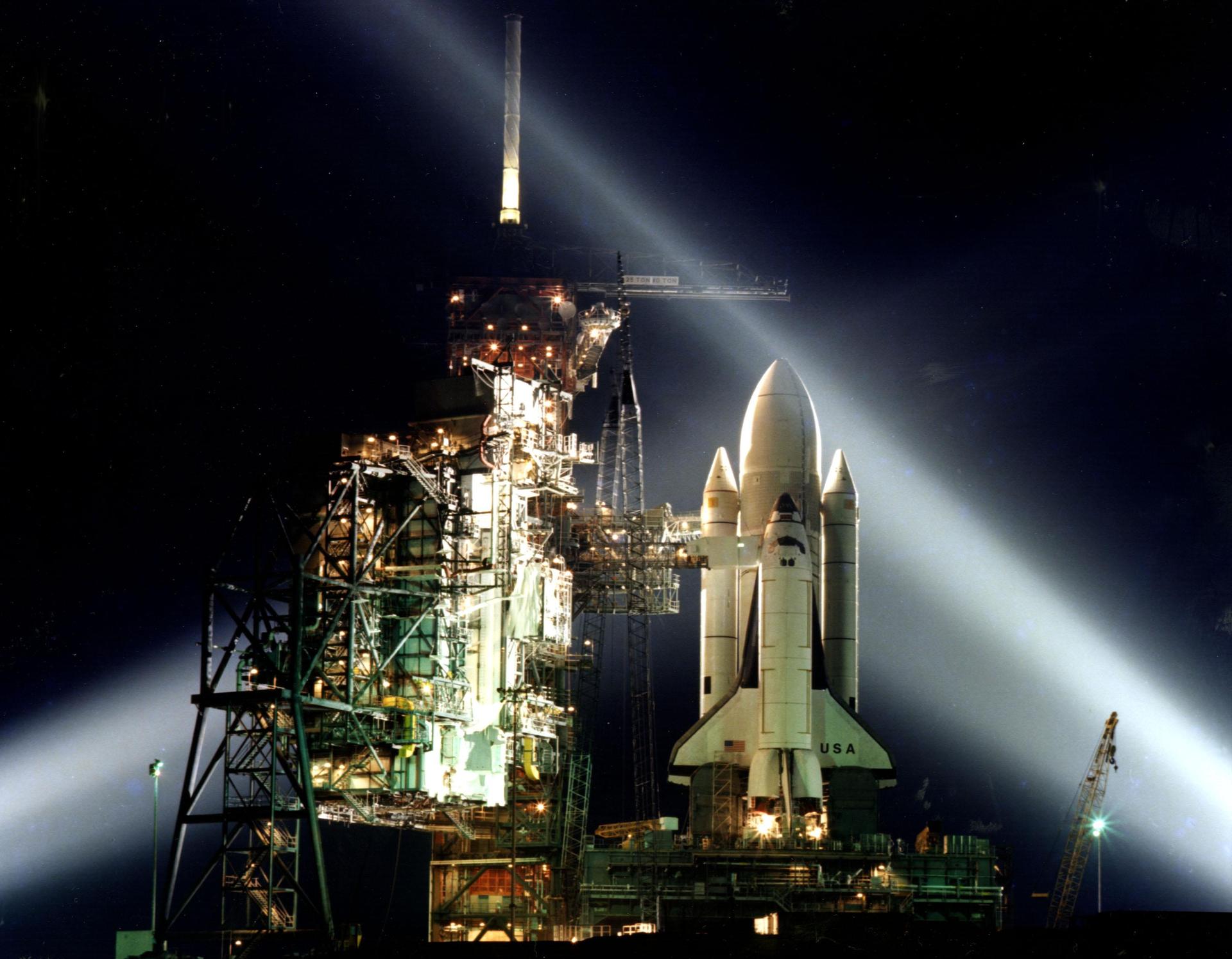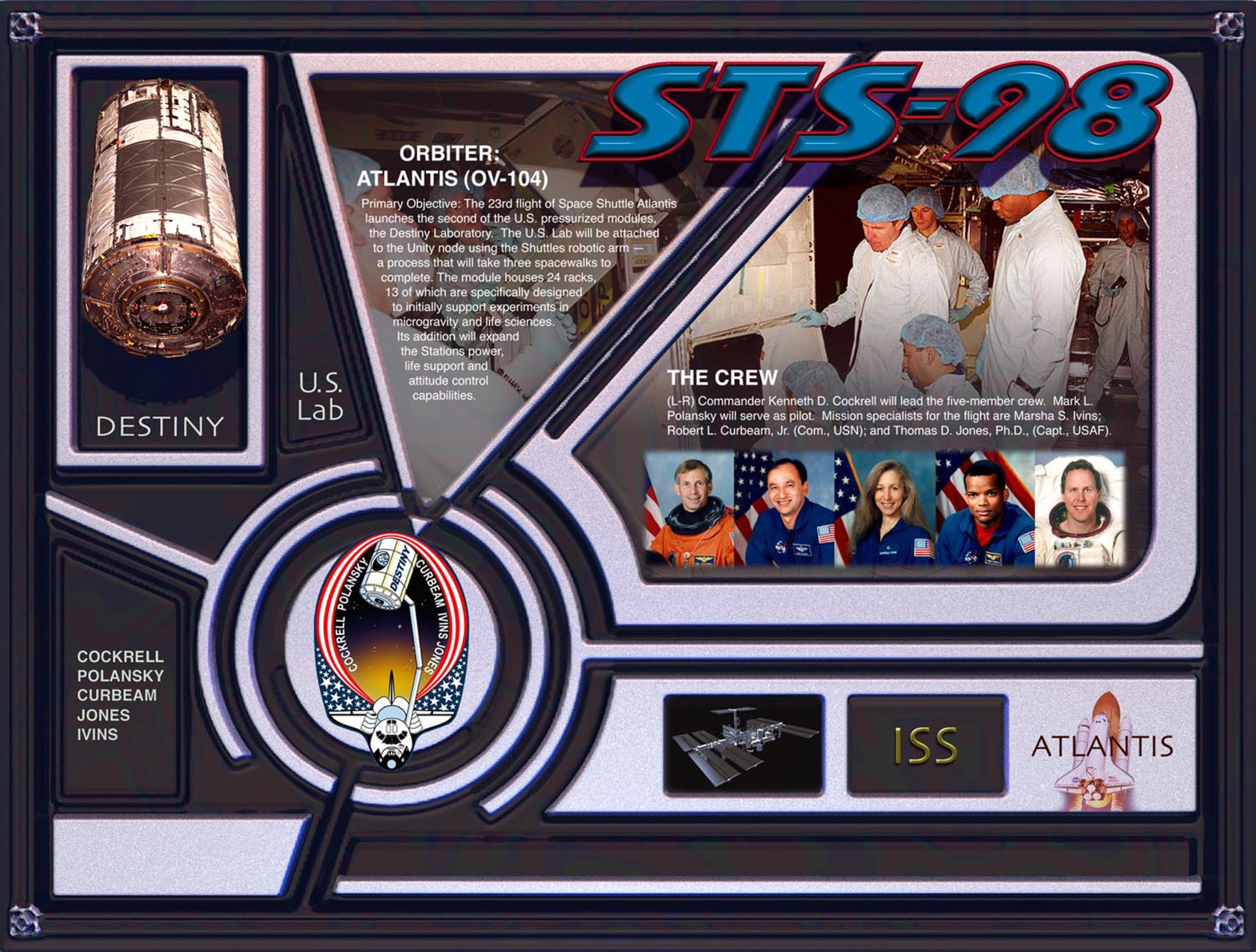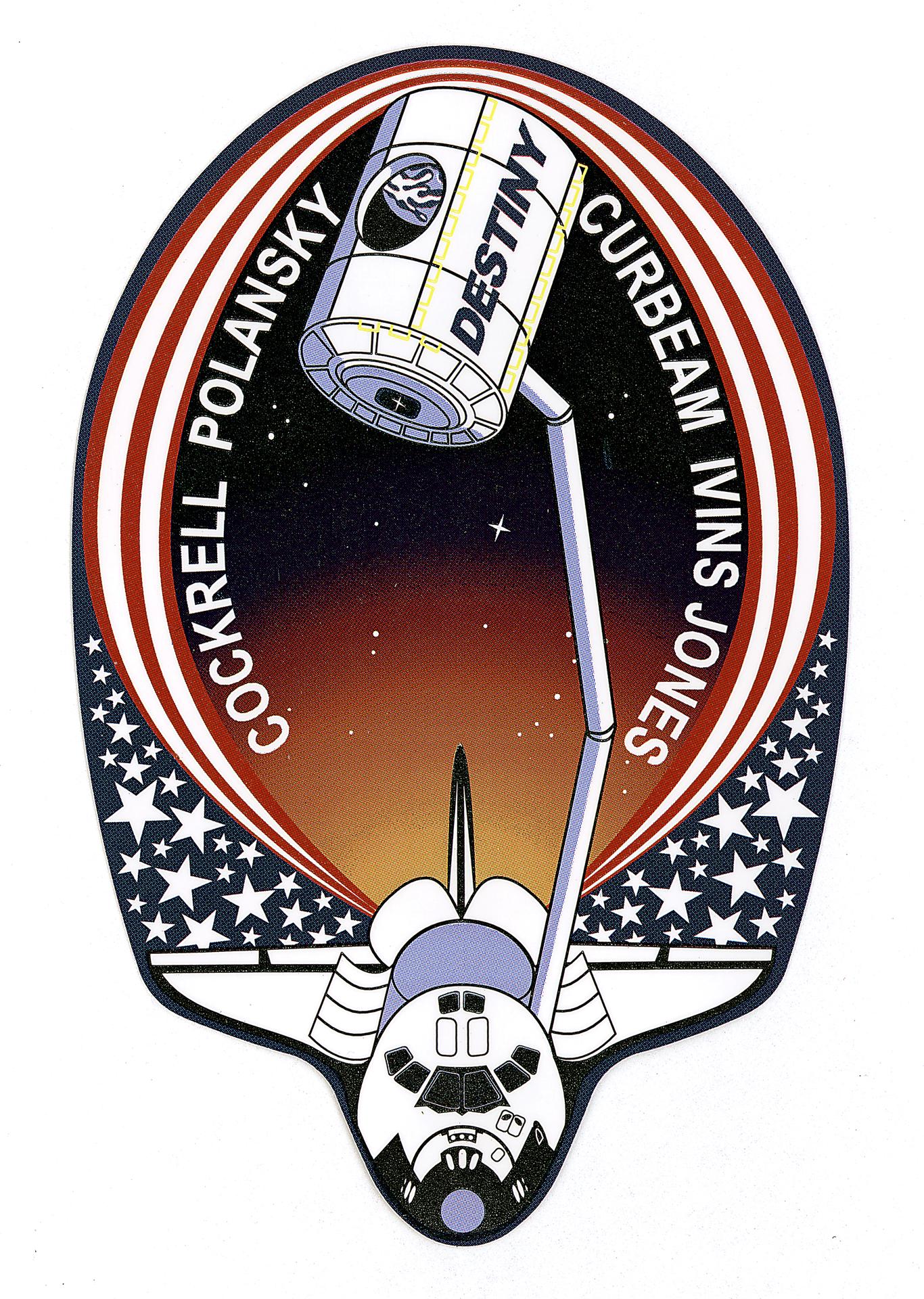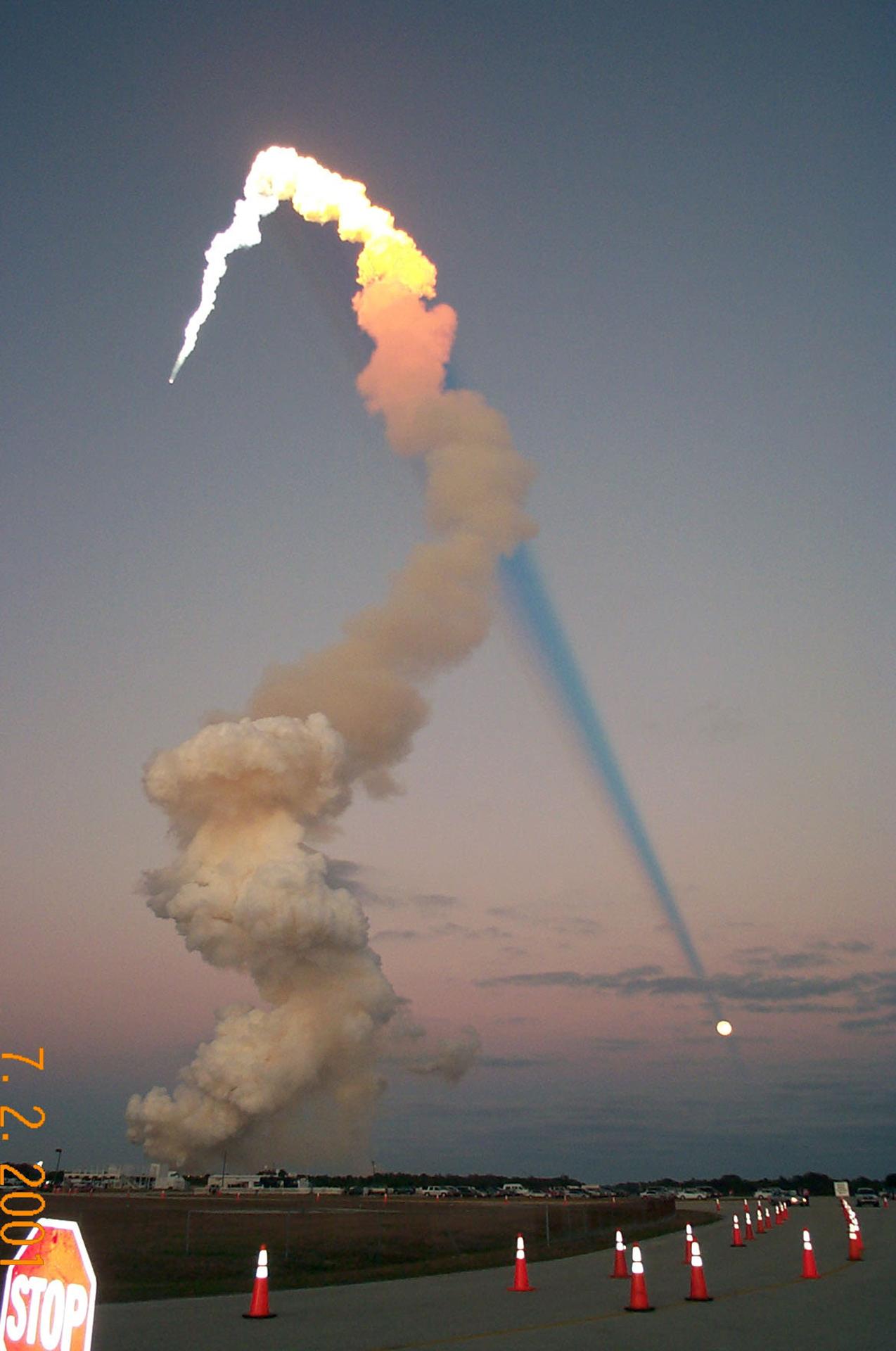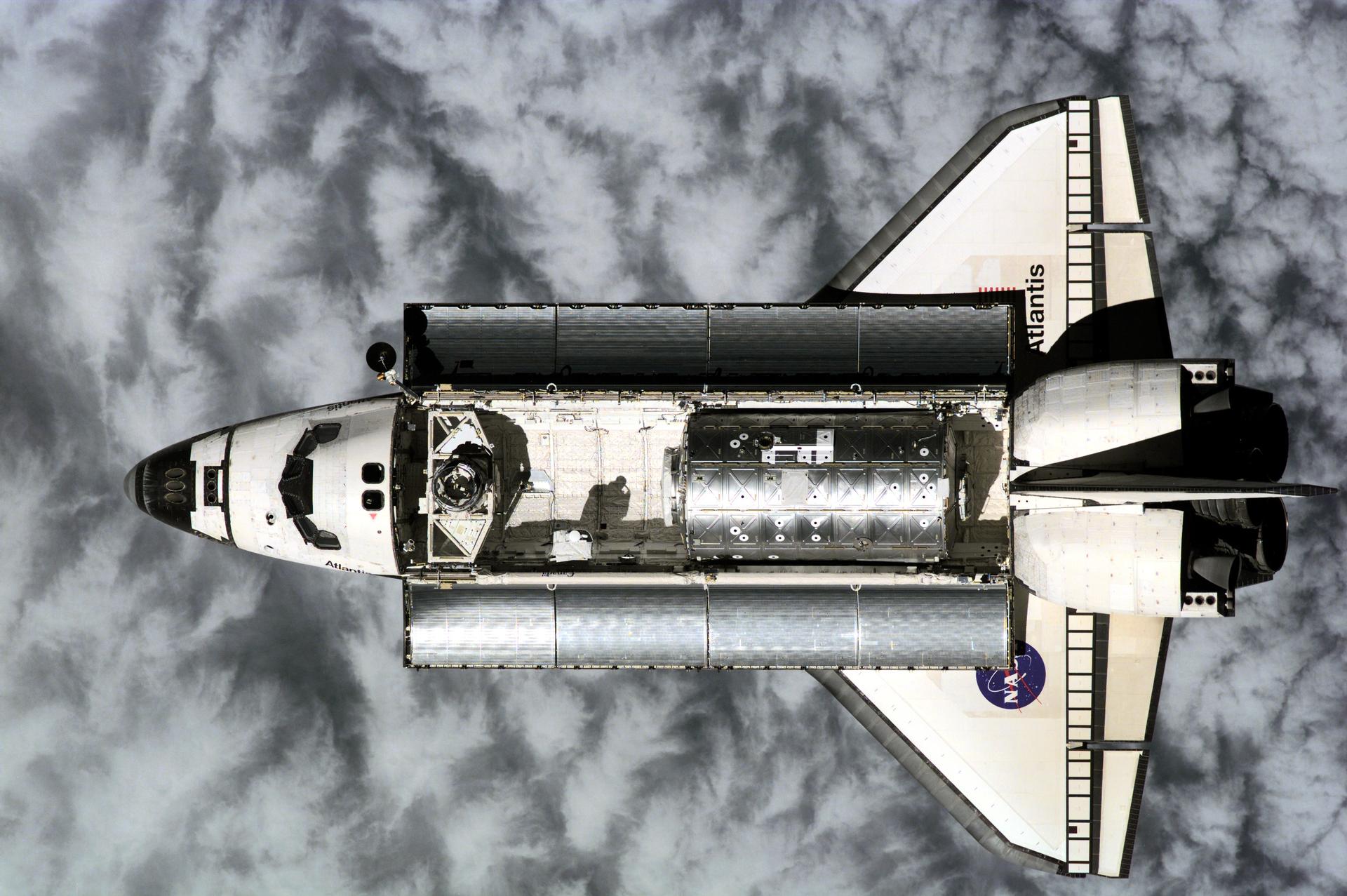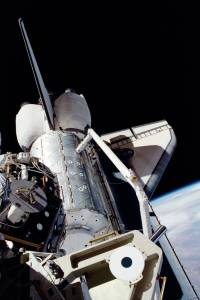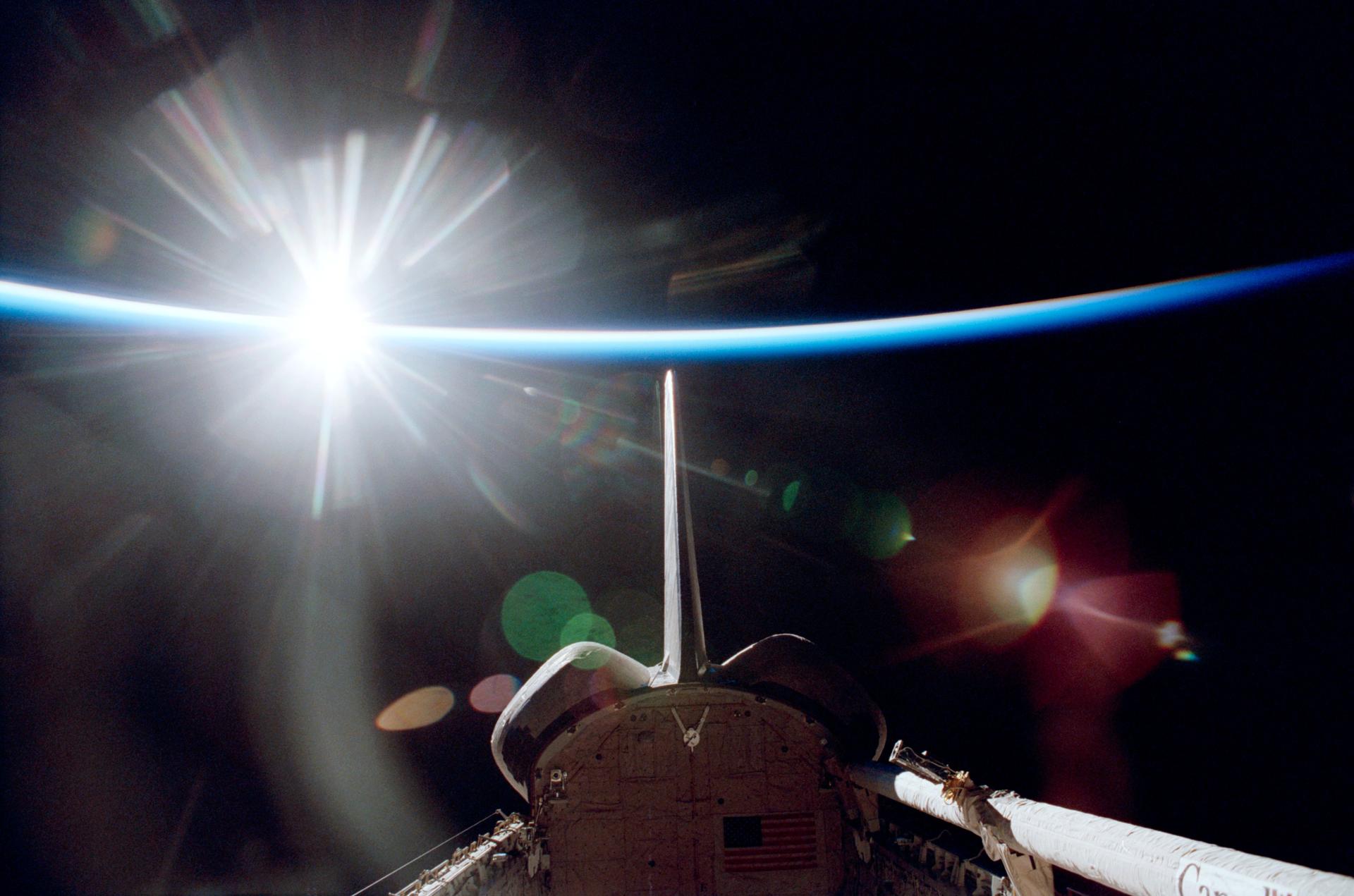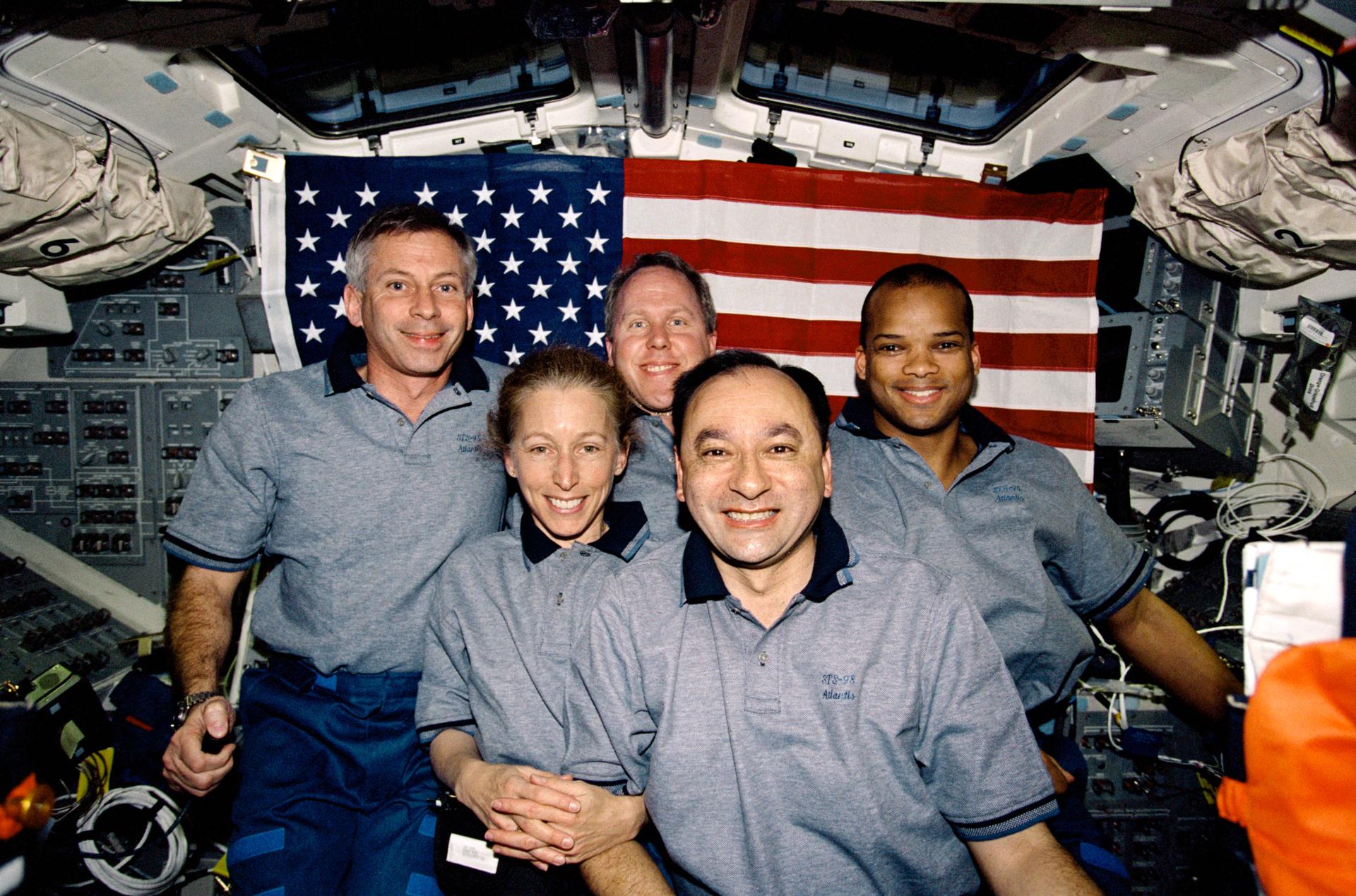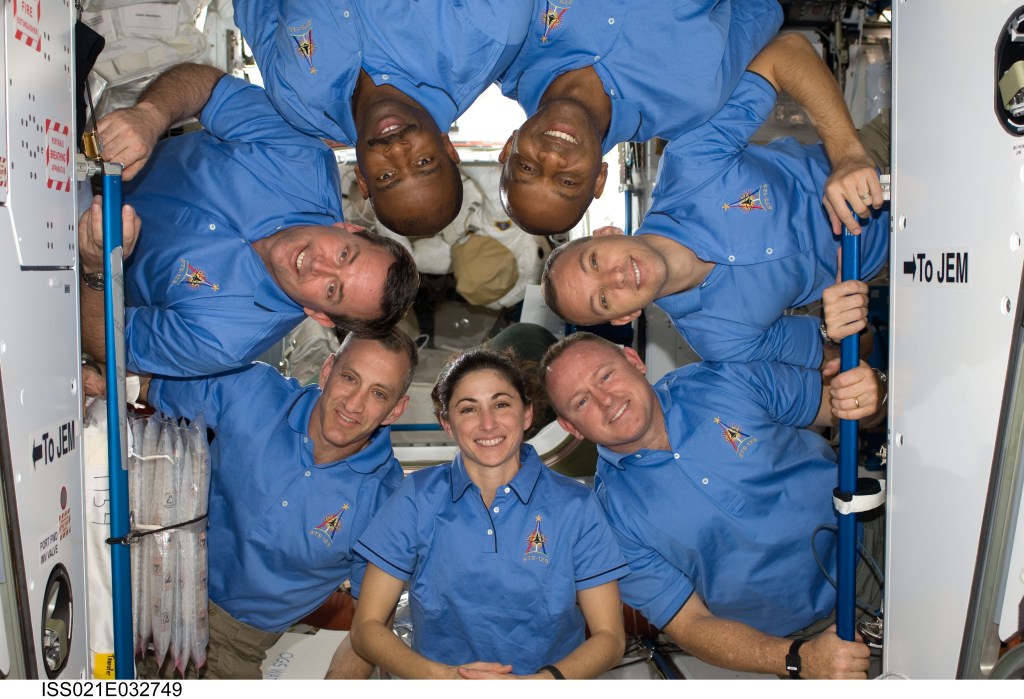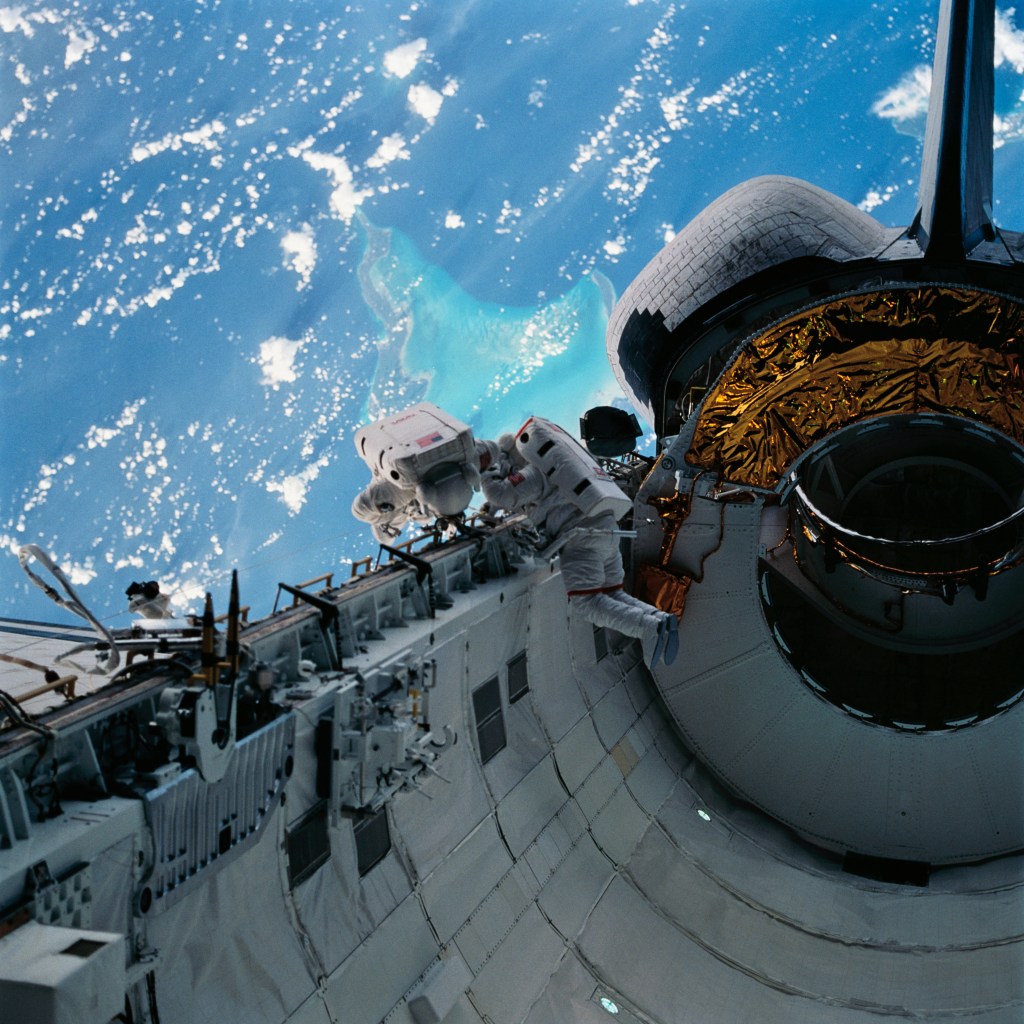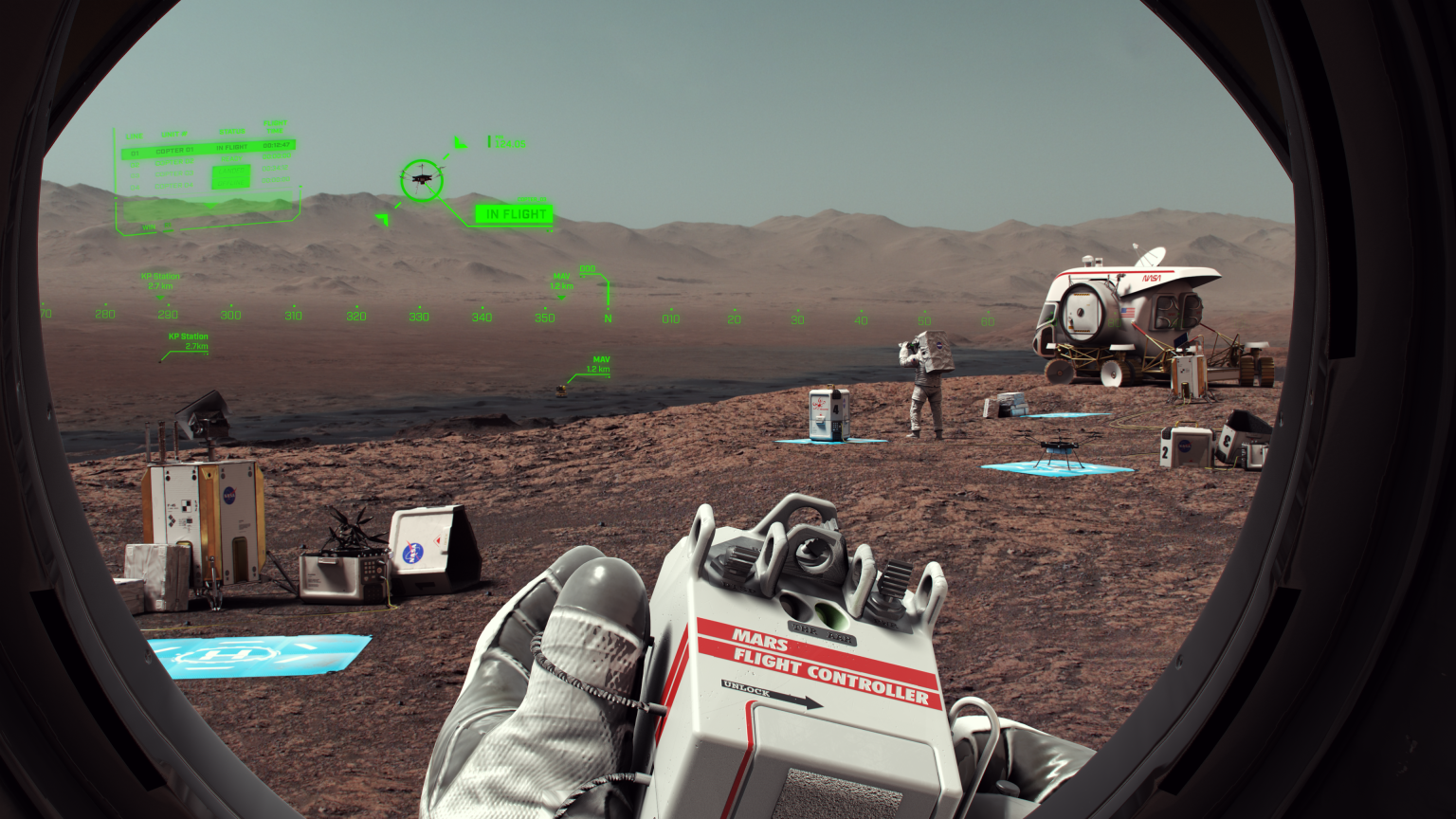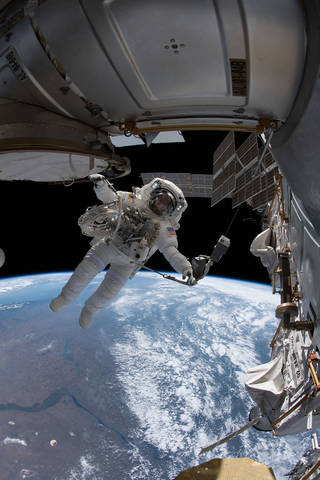
STS-98
STS-98 installed the U.S. Laboratory Destiny on the International Space Station using the remote manipulator system and concurrent extravehicular activities.
Orbiter
mission duration
Launch
Landing
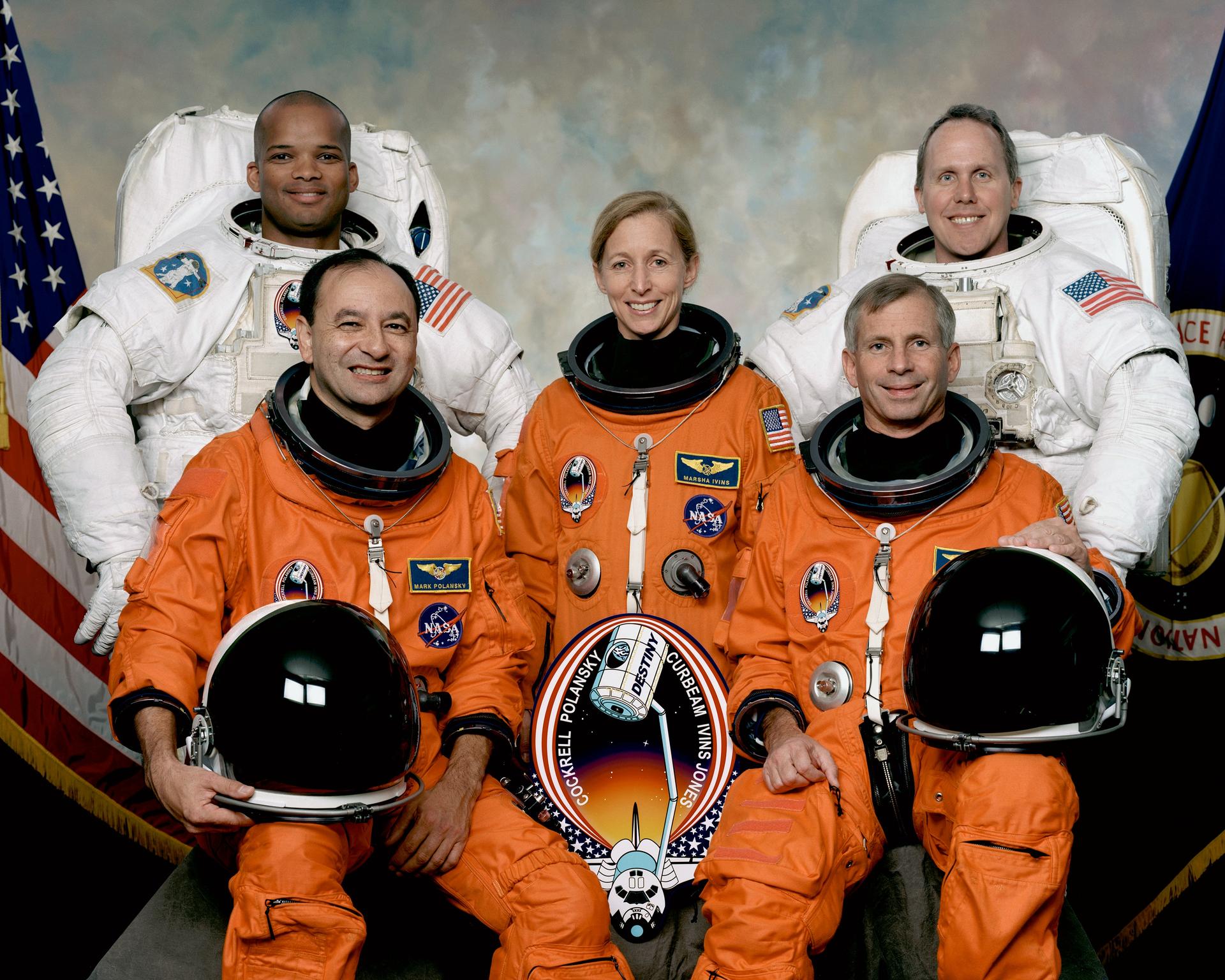
Mission Facts
Mission: International Space Station Assembly Flight 5A
Space Shuttle: Atlantis
Launch Pad: 39A
Launched: February 7, 2001, 6:13:02 p.m. EST
Landing Site: Edwards Air Force Base, Calif.
Landing: February 20, 2001, 3:33 p.m. EST
Runway: 22
Rollout Time: 57 seconds
Revolution: 203
Mission Duration: 12 days, 20 hours, 20 minutes and 4 seconds
Miles Traveled: 5.3 million
Crew
Kenneth D. Cockrell, Commander
Mark L. Polansky, Pilot
Marsha S. Ivins, Mission Specialist
Robert L. Curbeam, Jr., Mission Specialist
Thomas D. Jones, Mission Specialist
Mission Highlights
After docking to the International Space Station on day 2, station and shuttle crews opened hatches and unloaded supplies: three 12-gallon bags of water, a spare computer, cables to be installed inside the station to power up Destiny, and various personal items for the station crew.
On Feb. 10, the U.S. Laboratory Destiny was successfully installed on the International Space Station using the remote manipulator system (RMS) and concurrent extravehicular activities (EVAs). Mission Specialist Marsha Ivins, using the RMS, grappled the pressurized mating adapter 2 on Node 1 and maneuvered it to the Z1 truss for a temporary stay. Then Ivins latched the RMS onto the U.S. Lab in the payload bay and lifted it out. She then flipped the 16-ton Lab 180 degrees and moved it into position to attach to Node 1. A set of automatic bolts tightened to hold it permanently in place.
On Feb. 11, ISS Commander Bill Shepherd and STS-98 Commander Cockrell entered Destiny and activated air systems, fire extinguishers, alarm systems, computers and internal communications, plus continued equipment transfers from the shuttle to the station. They also filmed onboard scenes using an IMAX camera.
On Feb. 13, ground controllers switched control of the station’s orientation to electrically powered gyroscopes — a milestone in station assembly that will conserve propellants aboard the complex. Also, Cockrell and Ivins powered up Atlantis’ robotic arm and used its cameras to view areas on a station cooling radiator that appeared to have bubbling paint.
On Feb. 14, shuttle and station crews reopened hatches for transfer of equipment. The transfer was completed on Feb. 15. In all, 3,000 pounds of equipment and supplies — water, food, spare parts, a spare Russian carbon dioxide removal system, spare computer, clothes, movies and other items — were moved from Atlantis to the station. About 850 pounds of trash were moved from the station to Atlantis.
Atlantis departed the station on Feb. 16 and Pilot Polansky flew the orbiter halfway around it before moving off.
EVA 1: 7 hours, 34 minutes—Mission Specialists Curbeam and Jones began their EVA at 10:18 a.m. EST Feb. 10, 2001, to connect electrical, data and cooling lines. They also reopened the hatches between Atlantis and the station. Commander Ken Cockrell and ISS Commander Bill Shepherd, using a laptop computer, remotely powered up key laboratory systems and cooling equipment in Destiny.
While Curbeam was attaching a cooling line, a small amount of frozen ammonia crystals leaked but was quickly stopped. The ammonia dissipated and vaporized and posed no problems as the crew continued their work. Decontamination actions were taken later to ensure no ammonia would enter Atlantis’ cabin. Curbeam remained in the sun a half-hour to vaporize any ammonia crystals on his spacesuit while Jones brushed off the suit and equipment. The spacewalkers then performed a partial pressurization and venting of the shuttle airlock to flush out any ammonia before final repressurization. Cockrell and Pilot Mark Polansky and Ivins wore oxygen masks in the cabin for about 20 minutes as a protective measure.
EVA 2: 6 hours, 50 minutes—At 10:40 a.m. EST Feb. 12, 2001, Jones and Curbeam exited Atlantis’ airlock and moved to the Pressurized Mating Adapter (PMA) 2, or docking port. Ivins used the RMS to latch onto the PMA 2, stowed earlier on the Z1 truss, and removed it with the help of visual cues by Jones and Curbeam. The two spacewalkers then moved to the U.S. Lab and again provided visual cues as Ivins moved the PMA 2 into its new position on the end of the Lab. The PMA 2 will become the primary docking port for future shuttle visits.
Other tasks for the spacewalkers included installing insulating covers over the pins that held Destiny in place during launch, attaching a vent to part of the Lab’s air system, putting wires, handrails and sockets on the exterior of Destiny for future spacewalkers, and attaching a base for the future space station robotic arm (SSRMS). Working ahead, Jones and Curbeam connected several computer and electrical cables between the docking port and Lab, unveiled the Lab’s large, high-quality window and attached an exterior shutter, and repositioned a movable foot platform.
EVA 3: 5 hours, 25 minutes — Feb. 14, 2001, the two spacewalkers attached a spare communications antenna to the station’s exterior, double-checked connections between Destiny and PMA 2, release a cooling radiator on the station, inspected solar array connections at the top of the station, and tested the ability of a spacewalker to carry an immobile crew member back to the shuttle airlock.
STS-98
Shuttle News
Retired Space Shuttle Locations
Shuttle Atlantis – Kennedy Space Center Visitor Complex Shuttle Discovery – Steven F. Udvar-Hazy Center Shuttle Endeavour – California Science…
Read the Story